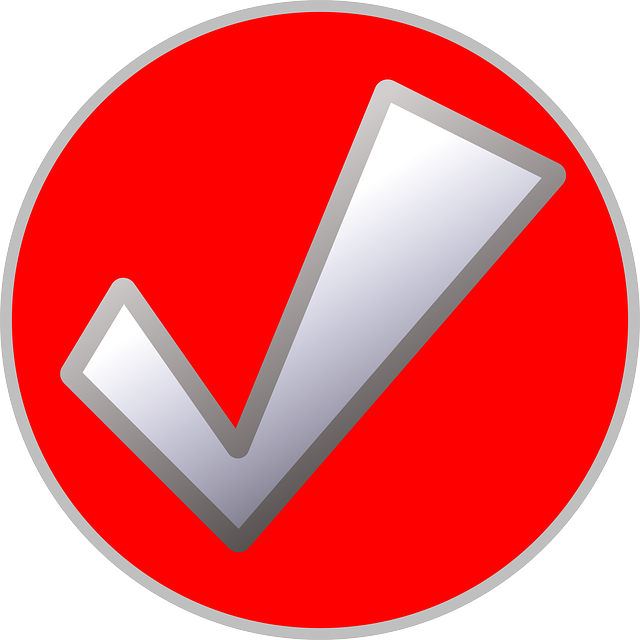To successfully register a vehicle, one must complete the DMV vehicle verification process, which is central to obtaining a valid registration. This process includes a VIN number verification, where the vehicle's VIN is cross-referenced with the DMV's database to ensure accuracy and prevent fraud. Individuals must present necessary documentation, including a completed VIN verification form, at one of the designated DMV VIN inspection locations. These inspections are conducted by licensed inspectors or law enforcement officers following strict registration inspection requirements. It's crucial to identify your nearest DMV VIN inspection location and understand the state-specific DMV VIN check requirements beforehand. The costs associated with this process can vary by state, so it's advisable to verify these in advance. A successful VIN verification at a DMV registration inspection site confirms that all vehicle details correspond with the DMV records, ensuring legal compliance and facilitating safe road use. Always prepare proof of ownership, among other required documents, to streamline the process and avoid any registration issues or legal complications.
When navigating the car registration process, the DMV vehicle verification, particularly the VIN number verification, stands as a pivotal step to ensure your vehicle is legally recognized. This article delves into the critical aspects of obtaining a DMV VIN inspection, from understanding its significance to locating authorized DMV VIN inspection stations and detailing the necessary documents and associated costs. Whether you’re transferring registration between states or buying a new car, grasping the VIN verification process and meeting the DMV’s VIN check requirements are essential for maintaining your vehicle’s compliance with state regulations.
- Understanding the Importance of DMV VIN Verification for Car Registration
- Preparing for VIN Number Verification: Necessary Documents and Costs
- Locating DMV VIN Inspection Stations: A Comprehensive Guide
- The Step-by-Step DMV VIN Inspection Process
- Meeting the DMV's VIN Check Requirements for Registration Compliance
Understanding the Importance of DMV VIN Verification for Car Registration
When registering a vehicle with the Department of Motor Vehicles (DMV), one of the critical steps is undergoing a DMV vehicle verification process, which includes a VIN number verification. This meticulous check ensures that the Vehicle Identification Number recorded on your vehicle matches the one in the DMV’s database. A discrepancy here could lead to complications with your registration, potentially leaving you without valid car registration and subject to legal penalties. The VIN inspection is a safeguard against fraudulent activities and helps maintain the integrity of the vehicle title and ownership records. To facilitate this process, individuals must provide the necessary documentation, including a completed VIN verification form, and be aware of the VIN verification cost associated with the DMV VIN inspection locations. These locations are strategically positioned to make the VIN number verification as accessible as possible for vehicle owners. The VIN verification process is streamlined to adhere to the DMV registration inspection requirements, which typically involve an inspection by a licensed inspector or a law enforcement officer who can verify the VIN and confirm that the vehicle’s details align with the DMV records. This step is indispensable for maintaining the legal status of your car registration and ensuring compliance with state regulations regarding vehicle ownership and operation.
Preparing for VIN Number Verification: Necessary Documents and Costs
When preparing for a VIN number verification as part of the DMV vehicle verification process, it’s crucial to have all the necessary documents and understanding of associated costs to ensure a smooth experience. The VIN inspection is a critical step in the DMV vehicle registration process, confirming that the Vehicle Identification Number on your vehicle matches the records held by the Department of Motor Vehicles (DMV). This alignment is essential for maintaining valid registration and compliance with state laws, whether you’re transferring a vehicle due to relocation or completing a private sale.
Before scheduling a DMV VIN inspection, gather all required documentation. Typically, this includes the completed VIN verification form, which can often be found on the DMV’s official website. Additionally, you may need to provide proof of ownership, such as a title or bill of sale, and personal identification. Be aware that there are different DMV VIN inspection locations across each state, so it’s important to locate the nearest facility to avoid unnecessary travel. The cost for a VIN verification process can vary by jurisdiction, with some states charging a flat fee while others base the fee on a percentage of the vehicle’s value or weight. Ensure you verify these costs prior to your visit to the DMV VIN inspection location to avoid any surprises. The DMV VIN check requirements are straightforward, but adhering to them is necessary for successful registration and peace of mind. Understanding the DMV registration inspection process beforehand will facilitate a more efficient and error-free experience, ensuring that your vehicle registration is accurate and up-to-date.
Locating DMV VIN Inspection Stations: A Comprehensive Guide
When it comes time to secure a DMV vehicle verification through a VIN number verification, locating an official DMV VIN inspection station is a critical step in the process. The VIN inspection is a meticulous examination that ensures the Vehicle Identification Number recorded with the DMV matches the one affixed to your vehicle. This alignment is essential for maintaining a valid and compliant registration. To begin, individuals should visit their state’s Department of Motor Vehicles (DMV) website or contact them directly to identify authorized DMV VIN inspection locations within their jurisdiction. These locations are staffed with certified inspectors who are trained to perform the VIN verification process accurately. The requirements for a DMV registration inspection may vary by state, so it is imperative to familiarize yourself with these beforehand. Ensure you have all necessary documentation, including the completed VIN verification form, and any other items your specific state mandates. Understanding the DMV VIN check requirements can expedite the process and help avoid delays. Once at the inspection station, the inspector will scrutinize the VIN on your vehicle’s chassis, engine block, and any other locations as required by your state’s regulations. The VIN verification process is a critical safeguard against fraudulent activities, such as title and registration fraud, and ensures that the vehicle’s history, including any past accidents or damage, aligns with its current status on public records. Knowing where to find and how to prepare for a DMV VIN inspection can simplify what might otherwise be a daunting task, ensuring your vehicle is legally registered and ready for the road.
The Step-by-Step DMV VIN Inspection Process
When securing a DMV vehicle verification, one of the critical steps is the VIN number verification process. This ensures that the vehicle’s identification number matches the records at the Department of Motor Vehicles (DMV). The VIN inspection is a meticulous examination conducted to confirm the authenticity and accuracy of the VIN on the vehicle against the information held by the DMV. To initiate this process, you must first locate a certified inspection station or an authorized DMV VIN inspection location. These facilities are equipped with the necessary tools and expertise to perform the verification.
Upon arrival at the DMV VIN inspection location, you will be guided through the DMV VIN check requirements. You should have your vehicle’s title and registration if it’s a used car purchase, along with any applicable documents indicating the transfer of ownership. The inspector will then proceed to examine the VIN on the vehicle’s Vehicle Identification Number plate, usually found on various parts of the car such as the dashboard, engine block, or vehicle frame. This is cross-referenced with the VIN documented in your paperwork and the DMV database. If all details align, the inspection passes, and this confirms that your registration process will be compliant. If there are discrepancies, further action will be required to rectify the issue before the vehicle can be registered. This step is non-negotiable in the vehicle registration process and is essential for maintaining the integrity of vehicle ownership records within the state’s DMV system.
Meeting the DMV's VIN Check Requirements for Registration Compliance
When registering a vehicle with the Department of Motor Vehicles (DMV), one of the critical steps is to undergo a DMV vehicle verification process, which includes a VIN number verification. This process is designed to ensure that the Vehicle Identification Number recorded in the DMV’s database accurately reflects the number on your vehicle. A mismatch between these records can lead to non-compliance with state registration laws, potentially causing delays or complications. To adhere to the DMV’s VIN check requirements for registration compliance, vehicle owners must complete a VIN inspection at an authorized DMV VIN inspection location. This inspection is a critical safeguard that verifies the authenticity of the car and its history, which is essential for safety and legal compliance. The VIN verification process is straightforward: the VIN is checked against the vehicle’s title, registration record, and other relevant documents to confirm that the vehicle has not been reported as stolen, has no outstanding liens, and matches the recorded information in the DMV database. By ensuring that this step is completed correctly, vehicle owners can avoid potential legal issues and maintain a valid registration, facilitating lawful and safe operation on public roads. To expedite this process, it’s advisable to familiarize oneself with the specific DMV VIN inspection locations in your area, as well as the necessary documents required for the VIN verification form, which typically includes proof of ownership, a valid driver’s license, and any other documentation specified by the state.
When registering a vehicle, the DMV vehicle verification process, particularly the VIN number verification, is a critical step to ensure your car’s information matches official records. This meticulous step not only simplifies your registration but also guarantees compliance with state regulations. To navigate this process efficiently, it’s imperative to understand the requirements and locate nearby DMV VIN inspection stations. Armed with the knowledge of the VIN verification process and costs involved, vehicle owners can approach this final hurdle in vehicle registration with confidence. By adhering to the DMV’s VIN check requirements for registration compliance, you’ll successfully complete your car’s registration, ensuring legal operation on public roads.



